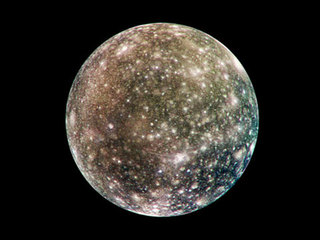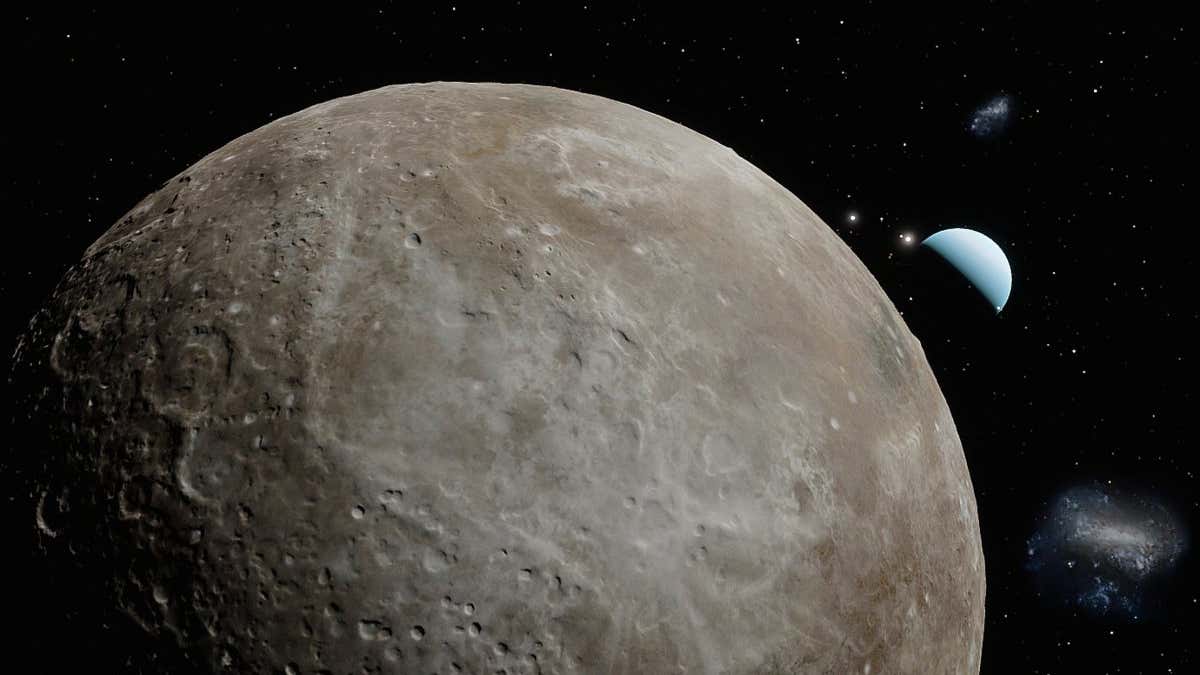*This post may contain affiliate links. This means we may make a commission if you purchase an item using one of our links*
The main differences between Callisto and Titania are that Callisto is the 3rd largest moon while Titania is the 8th biggest moon in our solar system with a diameter of 4820.6km while Titania’s is 1576.8km, Callisto is the most cratered moon in our solar system while Titania is not and Titania orbits Uranus while Callisto orbits Jupiter.
There are various other differences between the two so, continue reading if you want a more detailed look at what makes Callisto and Titania so different from each other along with some of the features that they have in common.
What Is The Moon Callisto?
Table of Contents

Callisto is one of the large moons orbiting Jupiter, the outermost of the Galilean moons, first discovered on 7th January 1610. The surface of this icy world is frozen, but scientists believe an underground ocean could reside beneath the ice.
Even if there’s water on Callisto, it won’t necessarily hold life because the surface is so old. Scientists will need to conduct more research into the moon before determining whether this is a likely possibility.
The ESA’s JUICE (Jupiter Icy Moon Explorer) mission is focused on the three ice moons of Jupiter. It is expected to arrive in 2030 and will focus on learning more about the environment of each, as well as their potential for hosting life.
Scientists estimate that Callisto is around 4.5 billion years old (the same age as Jupiter), and its average distance from the Sun is approximately 778 million km. It has a diameter of 4,820.6km, which makes it similar in size to the planet Mercury, and the average temperature is a frigid minus 139.2 degrees Celsius.
Callisto takes seven days to orbit its planet at an average distance of 1,880,000km, and it is tidally locked, meaning the same side of it always faces Jupiter. But this moon experiences less tidal influence than the other Galilean moons because it lies in the orbit of Jupiter’s primary radiation belt.
The name of this moon is derived from the stories of Greek myth. Callisto was the nymph who had an affair with Zeus, the King of the Gods. Upon hearing this news, Zeus’ wife Hera turned Callisto into a star and placed her in the Ursa Major constellation. Interestingly, every moon of Jupiter is named after a Greek figure who Zeus seduced.
Callisto may be the third biggest moon and similar in size to the planet Mercury, but it only has a mass of 107,593,737,963.819 billion kg. That may sound like a lot, but it’s only ⅓ the mass of the similarly sized Mercury.
You may wonder why scientists classify Callisto as a “moon” rather than a planet if it’s almost the same size as Mercury. The reason is simple; planets must orbit the sun, but Callisto orbits one of the planets.
The composition of this frigid world is around 60% rock and iron and 40% ice. The moon has roughly equal amounts of rock and ice, plus the potential for water below the surface. There are also traces of carbon dioxide, organic compounds, and silicates.
This moon is one of the oldest landscapes in the Milky way and the most heavily cratered body in our system. However, scientists believe this could now be a “dead” moon as there are no longer any signs of volcanism or plate tectonics on its surface.
What Is The Moon Titania?

Titania is the biggest of Uranus’s moons, with a circumference of 4,956km and a diameter of 1576.8km.
The high density of this moon suggests that it most likely formed from a collection of dust and debris leftover from the formation of Uranus or from the debris created in the collision that reportedly tilted Uranus onto its side. As a result Titania has a mass of 3.4 × 10^21 kg.
First discovered on 11th January 1787 (the same day as the discovery of Oberon, the second biggest moon of Uranus) by British astronomer William Herschel, the name “Titania” comes from the Shakespeare play, A Midsummer Night’s Dream. (Most of Uranus’ moons are named after Shakespeare’s characters.)
Having observed Titania for many years, scientists theorize that its composition is likely to be equal parts ice and rock, the latter of which may contain carbonaceous materials and organic compounds.
Research suggests that the moon most likely has a rocky core (accounting for 66% of the moon’s radius) and an icy mantle. If the mantle contains ammonia, it will act as antifreeze and make it possible for liquid water to exist. In this instance, the moon could possess a layer of liquid ocean around 50km thick.
Titania tilts slightly towards the equator of Uranus and is tidally locked to its planet. This means a Titania day is 8 days and 17 hours which would be the same for its orbital cycle. Titania has an average temperature of -203 degrees Celsius.
The planet Uranus is also tilted, with the moons orbiting on the equatorial plane, giving it extreme seasons. On Titania, the north and south poles experience 42 years of complete sunshine followed by 42 years of total darkness.
Scientists have observed the presence of large amounts of carbon dioxide, suggesting this may be the primary component of this moon’s atmosphere. Thanks to the tilted orbit, and a concentration of solar radiation from the poles, Titania probably maintains a carbon dioxide cycle, similar to the hydrogen cycle on Earth.
Similarities Between Callisto And Titania
As both are natural satellites, Callisto and Titania do share a few similarities, which includes the following:
- Both have a hotter central core.
- Both have a rocky, terrestrial surface.
- Both are spherical in shape.
- Neither have rings surrounding them.
- Both are tidally locked to their planet.
- Both orbit their planet in an elliptical pattern.
- Neither have a magnetic field.
- Neither have tectonic plates
Differences Between Callisto And Titania
In regards to the differences that the two have, they include the below:
- Callisto is the bigger of the two with a diameter of 4,820.6km whilst Titania has a diameter of 1576.8km.
- Titania orbits Uranus whilst Callisto orbits Jupiter.
- Titania has a very thin exosphere composed mostly of carbon dioxide whilst Callisto’s atmosphere is thin, composed of hydrogen and oxygen.
- A day on Titania takes 8 days 17 hours whilst a Callisto day is 17 days.
- It takes Titania 8 days 17 hours to orbit Uranus whilst Callisto orbits Jupiter in 17 days.
- Callisto orbits Jupiter at an average distance of 1.88 million km whilst Titania is 435,840 km away from Uranus.
- Titania’s average temperature is around -203 degrees Celsius whilst Callisto’s average temperature is -139.2 degrees Celsius.
- Callisto’s density is 1.83 g/cm³ whilst Titania’s density is 1.71 g/cm³.
- Callisto is amongst the most cratered entities in our solar system.
- Callisto’s mass is 1.07 x 10^23 kg whereas Titania’s mass is 3.4 × 10^21 kg.
- Titania’s gravitational strength is 0.367 m/s² whilst Callisto’s is 1.236 m/s².
- Titania may have a water under its surface while Callisto is unlikely to have the same.
Summary
As both are moons, they do share a fair few things such as their rocky exterior, the fact both orbit gas giants and are also tidally locked to said planets, but they are very different from each other too.
Whether it be in regards to size, mass, gravitational strength, density, the number of craters that are present within their surfaces among other things so, despite the commonalities Callisto and Titania share, they are still distinguishable and can be told apart.

